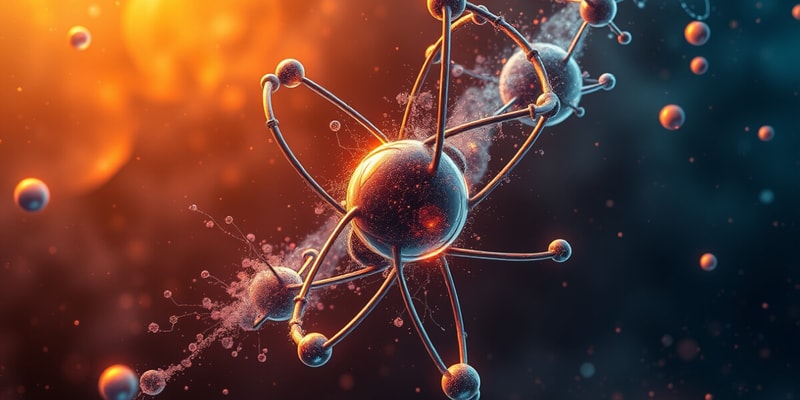Podcast Beta
Questions and Answers
Which type of matter retains its volume and shape under pressure?
What is the classification of matter that contains two or more constituent substances?
Which of the following is an example of a homogeneous mixture?
How many chemical bonds are present between carbon and oxygen in carbon dioxide?
Signup and view all the answers
Which atomic particle carries a negative charge?
Signup and view all the answers
Which of these substances is classified as a liquid?
Signup and view all the answers
What is the electronic configuration of magnesium?
Signup and view all the answers
Which shell is nearest to the nucleus in an atom?
Signup and view all the answers
What is the valency of iron (Fe) based on the compound Fe₂O₃?
Signup and view all the answers
Which atomic particle is NOT present in the nucleus of an atom?
Signup and view all the answers
What is the primary function of a seismograph or seismometer?
Signup and view all the answers
Which scale is used to measure the intensity of an earthquake?
Signup and view all the answers
What is a potential consequence of an earthquake occurring beneath the ocean?
Signup and view all the answers
What should you avoid doing during an earthquake for safety?
Signup and view all the answers
Which of the following is NOT a preparation method for earthquake safety?
Signup and view all the answers
Study Notes
Atomic Particles
- Electrons carry a negative charge.
- The electron shell K is closest to the nucleus.
- Magnesium has an electronic configuration of 2, 8, 2.
- The valence shell of magnesium is 2.
- The valency of hydrogen is one.
- The valency of Fe is 3 in the compound Fe₂O₃.
Earthquake
- A seismograph or seismometer records earthquakes.
- The Richter scale measures the intensity of an earthquake.
- An earthquake at the bottom of the ocean can cause tsunamis.
- Staircase is a safe alternative to a lift during an earthquake.
Composition of Matter
- Solids have the strongest intermolecular forces.
- Elasticity is the property of solids to retain their volume under pressure.
- Mixtures, compounds, and elements are the three main types of matter.
- A mixture contains two or more substances.
- Milk is an example of a homogeneous mixture.
- Water, mercury, and bromine are liquids.
Valency of Carbon and Oxygen
- Carbon has a valency of 4.
- Oxygen has a valency of 2.
- Carbon dioxide has two chemical bonds between one carbon and one oxygen atom.
Material Identification
- Gold and Silver are elements.
- Brass is an alloy.
- Hydrogen is an element.
- Milk and Lemon are mixtures.
- Sugar is a compound.
- Blue Vitriol is a compound.
- Water and Petrol are mixtures.
Studying That Suits You
Use AI to generate personalized quizzes and flashcards to suit your learning preferences.
Description
Test your knowledge on atomic particles, the properties of matter, and the specifics of earthquakes. This quiz covers the valency of elements, the composition of matter, and earthquake measurement techniques. Perfect for students looking to solidify their understanding of these fundamental concepts in science.




